Tribute to Mudlarks
Chunks of Thames mud were levelled on two shallow platters, and a selection of coins was placed on the layers of mud and sand. One of the platters carried sterling pounds and pennies whereas the second one was set with euro coins and cents. The platters with coins on were left outside for a few weeks. Exposed to rain showers, the mound wore down and eroded around the coins leaving behind pillars of sand protected by the coins. The platters were exhibited in the Lower Space gallery of the former Lambeth Ragged School, a Victorian building erected in the middle of a riverside slum. The installation was accompanied by video footage of tide receding shot on the foreshore nearby Lambeth Bridge.
Following in the footsteps of the original Victorian mudlarks, the phenomenon coined as rain splash erosion pays a tribute to the poor of the 18th and 19th centuries. Being a mudlark was a recognized occupation until the early 20th century; people searched the riverbanks for a living. They waded in the mud and collected anything that could be sold. Mudlarks looked for cargo fallen off the trade boats and picked up rags, coal, rope or trinkets that had been dropped into the water.
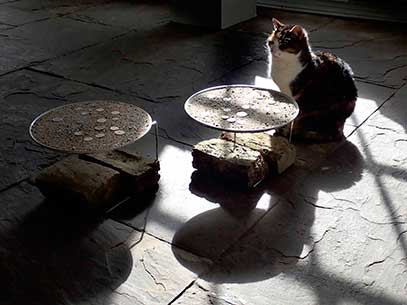 See more images of DEEP TIME:
See more images of DEEP TIME:
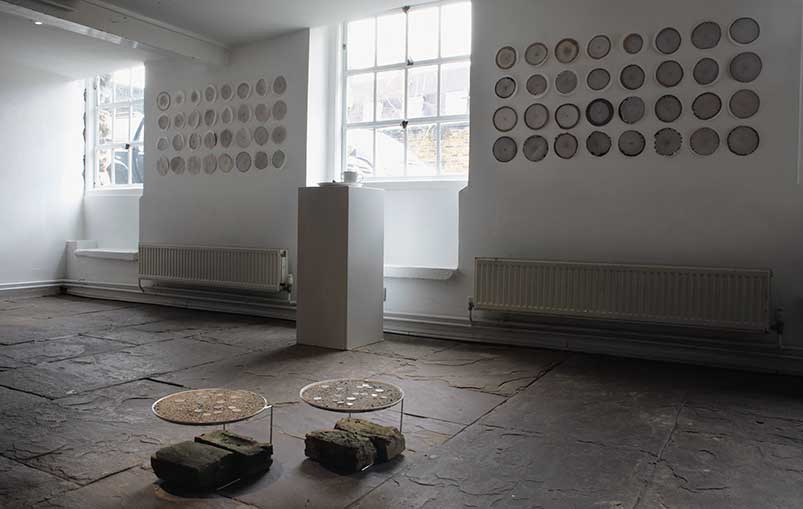 Installation in the Lower Space of Beaconsfield
Installation in the Lower Space of Beaconsfield 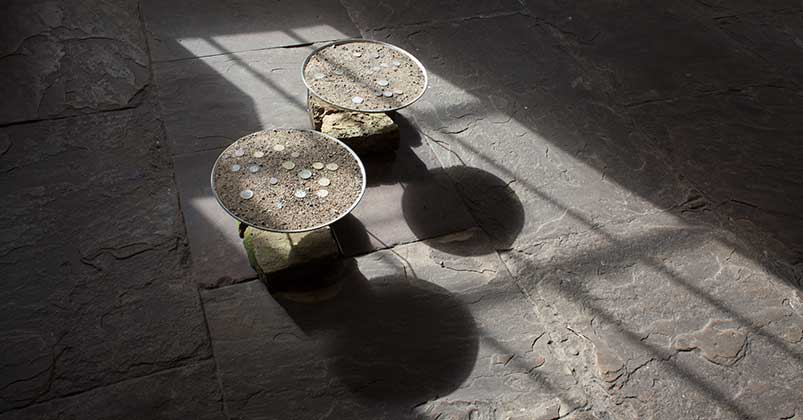 .
.
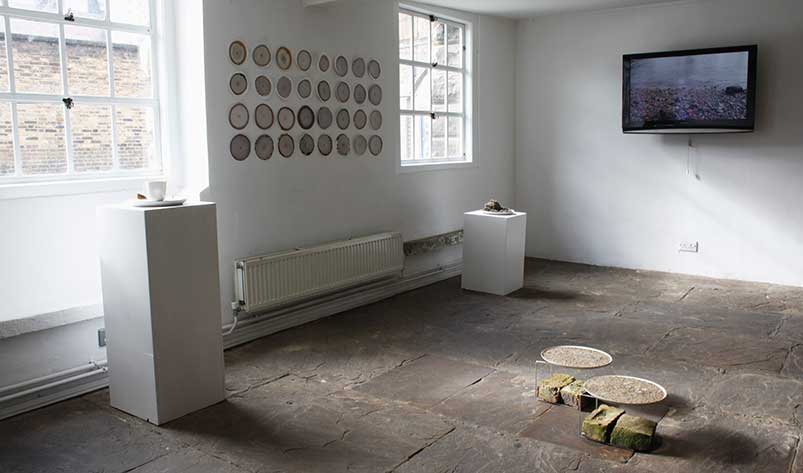 The monitor displayed video footage of receding water shot on the foreshore near Lambeth Bridge
The monitor displayed video footage of receding water shot on the foreshore near Lambeth Bridge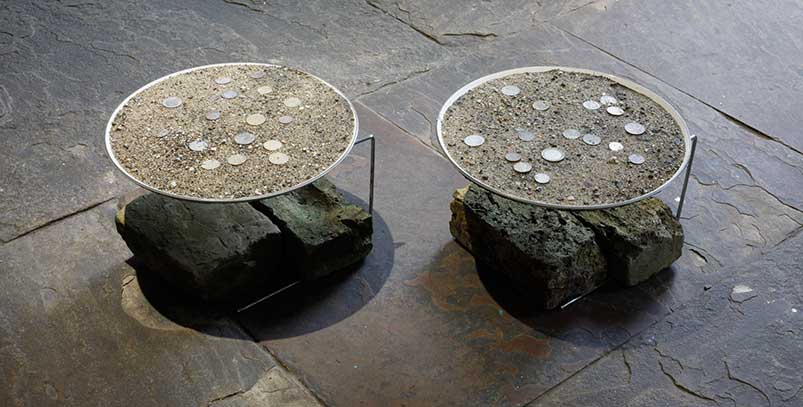 One of the platters carried sterling pounds and pennies. The second one was set with euro coins and cents
One of the platters carried sterling pounds and pennies. The second one was set with euro coins and cents